#greek byzantine sites
Text

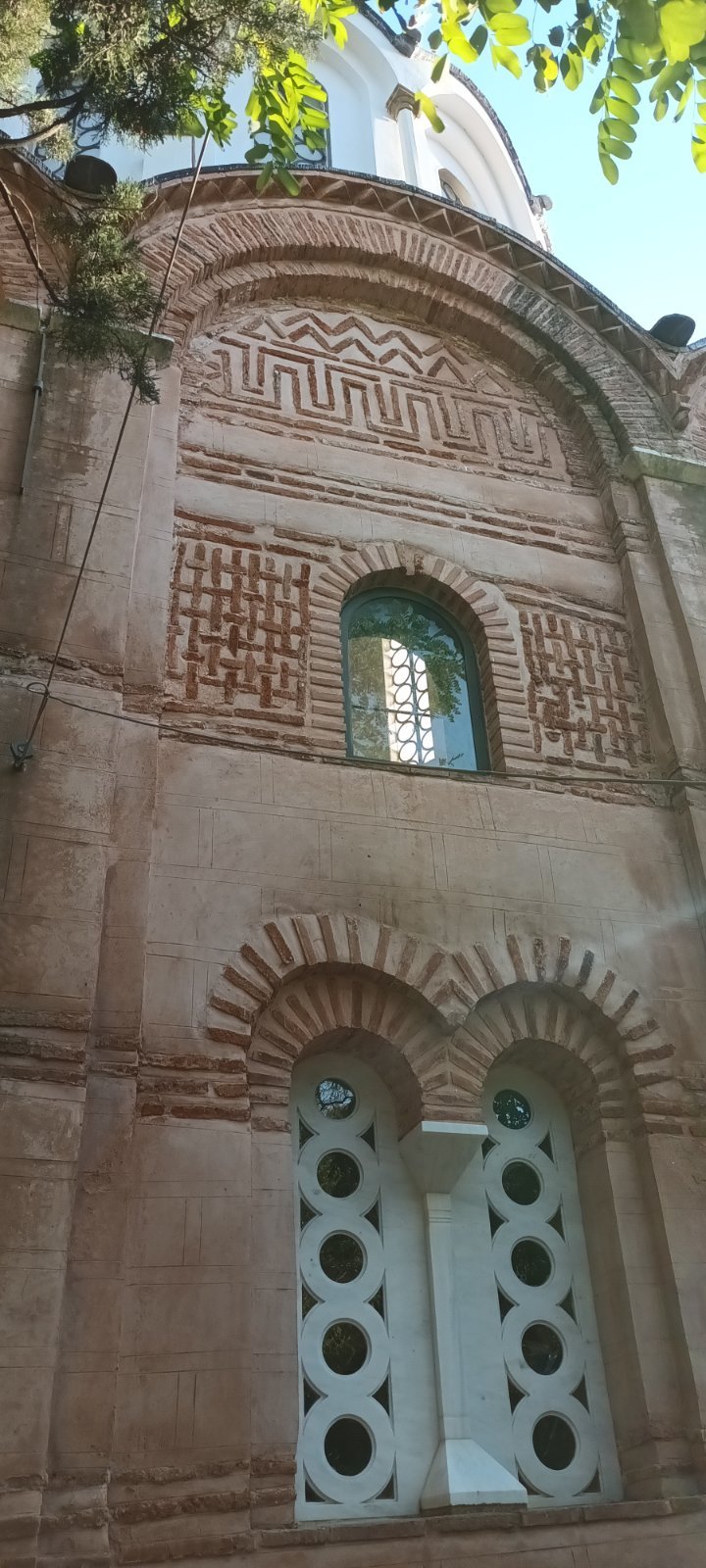





Back in the summer I actually went to Nea Moni Chiou, another restored 11th century monastery with a church with beautiful mosaics in the same style as Moni Dafniou and Osios Loukas.
#Greece#Chios#Nea Moni#Ελλάδα#Χίος#Νέα Μονή#mosaics#byzantine mosaics#byzantine churches#churches#archaeological sites#greek archaeological sites#greek byzantine sites
46 notes
·
View notes
Text
In the weeks since Hamas' Oct. 7 attack, Israeli airstrikes on the Gaza Strip have killed more than 15,000 Palestinians, according to Gaza's health ministry, and destroyed thousands of homes in the territory.
And there have also been tremendous losses to the region's ancient and globally significant cultural heritage. The region was a hub for commerce and culture under Egyptian, Greek, Roman and Byzantine rule. It remained influential for centuries thereafter.
A recent survey by the group Heritage for Peace details the damage done so far to more than 100 of these landmarks in Gaza since the start of the present conflict.
The casualties include the Great Omari Mosque, one of the most important and ancient mosques in historical Palestine; the Church of Saint Porphyrius, thought to be the third oldest church in the entire world; a 2,000-year-old Roman cemetery in northern Gaza excavated only last year; and the Rafah Museum, a space in southern Gaza which was dedicated to teaching about the territory's long and multi-layered heritage — until it was hammered by airstrikes early on in the conflict. (...)
"If this heritage be no more in Gaza, it will be a big loss of the identity of the people in Gaza," said Isber Sabrine, president of Heritage for Peace, in an interview with NPR. (...)
"The people in Gaza, they have the right to keep and to save this heritage, to tell the history, the importance of this land," he said.
The 1954 Hague Convention, agreed to by Palestinians and Israelis, is supposed to safeguard landmarks from the ravages of war. But landmarks in Gaza have been destroyed by Israeli strikes in earlier rounds of fighting. Dozens of sites, including the now-obliterated Great Omari Mosque, suffered damage in 2014. A report by UNESCO, the United Nations body that designates and protects World Heritage sites, cites further destruction to cultural and historic sites in Gaza in 2021. (...)
Destruction of historical sites and other cultural sites is part of genocide, it's the destruction of the proof of a people's relationship to the land and a horrible emotional blow at the community. UNESCO must act immediately against Israel's destruction of Palestinian heritage, and every country and international organism must expel Israel and impose sanctions to make the genocide and apartheid end.
#💬#palestine#gaza#israel#free palestine#world heritage#cultural heritage#historical sites#archaeology#cultures
2K notes
·
View notes
Text
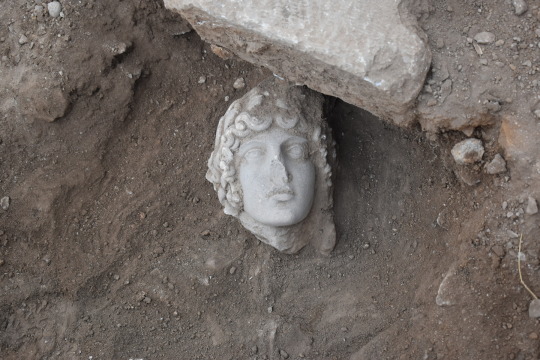
The Marble Head of Apollo Unearthed in Greece
The excavation, carried out by a group of students of the Aristotle University of Thessaloniki in the archaeological site of Philippi Kavala, brought to light important findings. Among other things, they discovered a rare head of Apollo dating back to the 2nd or early 3rd century AD.
The statue dates back to the 2nd or early 3rd century AD and it probably adorned an ancient fountain.
Natalia Poulos, Professor of Byzantine Archaeology, led the excavation, which included fifteen students from the Aristotle University of Thessaloniki (11 undergraduates, 2 master’s, and 2 PhD candidates), Assistant Docent Anastasios Tantsis, and Professor Emeritus of Byzantine Archaeology Aristotle Mendzo.
Archaeologists say, this year the excavation continued east of the southern main road (decumanus) at the point where it meets the northern axis of the city (the so-called “Egnatia”). The continuation of the marble-paved road was revealed, on the surface of which a coin (bronze phyllis) of the emperor Leo VI (886-912) was found, which helps to determine the duration of the road’s use. At the point where the two streets converge, a widening (square) seems to have been formed, dominated by a richly decorated building.
Archaeologists say evidence from last year’s excavations leads them to assume it was a fountain. The findings of this year’s research confirm this view and help them better understand its shape and function.

The research of 2022 brought to light part of the rich decoration of the fountain with the most impressive statue depicting Hercules as a boy with a young body.
The recent excavation (2023) revealed the head of another statue: it belongs to a figure of an ageneous man with a rich crown topped by a laurel leaf wreath. This beautiful head seems to belong to a statue of the god Apollo. Like the statue of Hercules, it dates from the 2nd or early 3rd century AD and probably adorned the fountain, which took its final form in the 8th to 9th centuries.
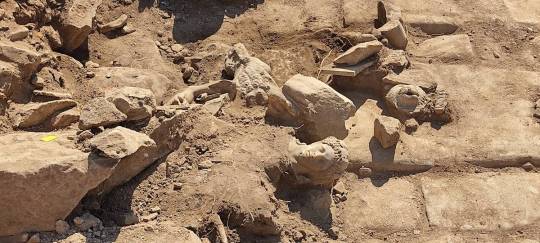
In classical Greek and Roman religion and mythology, Apollo is one of the Olympian gods. He is revered as a god of poetry, the Sun and light, healing and illness, music and dance, truth and prophecy, and archery, among other things.
Philip II, King of Macedon, founded the ancient city of Philippi in 356 BC on the site of the Thasian colony of Crenides near the Aegean Sea. The archaeological site was designated a UNESCO World Heritage Site in 2016 for its outstanding Roman architecture, urban layout as a smaller reflection of Rome itself, and significance in early Christianity.
By Oguz Buyukyildirim.
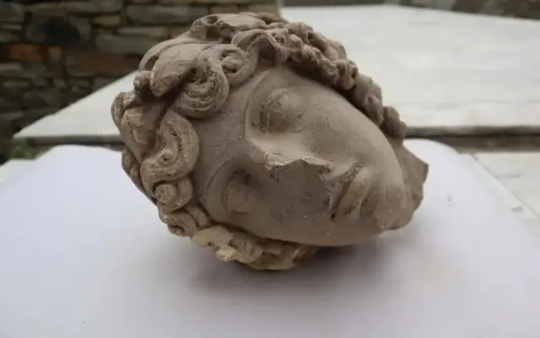
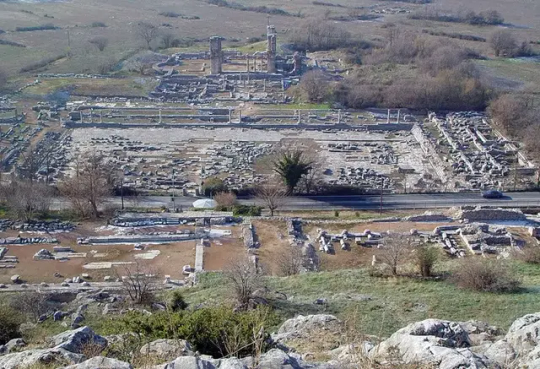
#The Marble Head of Apollo Unearthed in Greece#Philippi Kavala#marble#marble statue#ancient artifacts#archeology#archeolgst#history#history news#ancient history#ancient culture#ancient civilizations#ancient greece#greek history#greek art
193 notes
·
View notes
Text




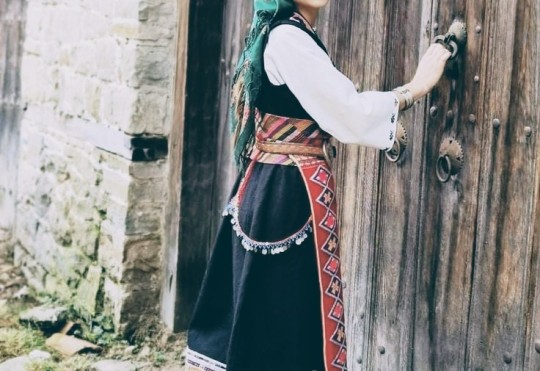



October 26th is Dimìtrovden/Mitrovden (Димитровден), or the Orthodox feast day of St. Demetrius of Thessaloniki. (Bulgarian: Свети Димитър Солунски) He is a 3rd-4th century Christian saint and great martyr (великомъченик) from the city of Thessaloniki in Greece, of which he is the patron saint.
Hagiographies refer to St. Demetrius as a young man of a senatorial family, who became proconsul and was tasked with persecuting Christians in the at the time still pagan Roman Empire. However, being himself Christian, he instead protected them, for which the emperor had him jailed. He was later speared to death as punishment for the defeat of the gladiator Lyaeus at the hands of Demetrius' disciple, Nestor. This marked the beginning of his veneration by Christians in the area, which grew in the following centuries, as he was said to guard the city against raiders.
Albeit not one originally, during the Middle Ages St. Demetrius came to be revered as a warrior saint, and iconography portrays him riding on a red horse, running a spear through various enemies — often Lyaeus, but also whoever was locally perceived as an enemy. In Greek icons, this is sometimes the Bulgarian tsar Kaloyan, while in Bulgarian ones — the Byzantine emperor Basil II The Bulgarslayer, or later on, a Turk. St. Demetrius is also associated with the founding of the Second Bulgarian Tsardom, specifically the uprising of the brothers Petăr and Asen, which broke out on Oct. 26th, 1185. The St. Demetrius church in Veliko Tărnovo (pictured above) was built in commemoration the event, and served as a coronation site of Asen dynasty tsars, who claimed him as their patron.
Traditionally, Dimitrovden marks the end of the seasonal transition from fall to winter, a period which begins on Oct. 14th with Petkovden. Bulgarian folk mythology casts the saints George and Demetrius in the role of twin brothers, whose respective holidays split the year into its warm and cold halves. The latter, elder of the two, ushers in the cold and darkness, as he rides in on his red horse and the winter's first snowflakes sprinkle down onto the earth from his beard. As St. George's opposite and counterpart, he takes on the qualities of a chthonic deity, and thus has connotations to death and the Beyond — under his patronage the so-called Dimitrovska Zadushnica takes place on the Saturday prior to Dimitrovden, one of several such holidays where food is given out in honor of deceased ancestors. Perhaps this is also why, in addition to St. George, folk imagination places him as a brother to Archangel Michael and nephew to St. Paraskeva/Petka.
Dimitrovden is the true end to the year's agrarian cycle — the harvest now over, it's time to put the farm tools away, make sure the animals have shelter and firewood is stocked up. It's also when farmhands and other labourers' contracts expire and they get rehired for the year ahead, which is why the day is also known as Razpust (Разпуст). As with other big holidays, a community-wide celebratory feast is held, and the customary ritual meal (or kurban) is mutton. The biggest ram is chosen, a pair of gold-painted apples are placed onto its horns and those present bow before it, after which it's slaughtered and cooked, and receives a priest's blessing before being served. Festivities are accompanied by music and horo (group dancing), which again has an intended matchmaking function. Namesakes of the saint celebrate the occasion, too — but they're traditionally served a chicken or rooster dish, according to gender. Other foods for Dimitrovden include corn, seasonal fruit and derived dishes, such as apple pita, pestil (a type of plum dessert), rachel (pumpkin syrup), etc.
Another activity which traditionally ends on Dimitrovden is construction work — a new house is supposed to have been completed by then, and the homeowners celebrate by throwing their own feast with a kurban, and inviting friends and relatives to witness the house being blessed by the master mason and the priest. The feast day has therefore been adopted as a career holiday of builders and masons.
The day's connection to the mysterious and otherworldly has inspired various beliefs and rituals of prognostic or divinatory nature, and anything from the weather and moon phases, to the behaviour of farm animals is observed carefully and used to make future predictions. Characteristic is the custom, known as polazvane (полазване), wherein members of the household make note of the first person to visit them, to physically cross the threshold into their home, and interpret them as a portent of things to come. Also, according to old treasure hunting legends, Dimitrovden is when "the sky opens" and buried gold emits a blue-ish flame just above ground.
Dimitrovden is part of the group of holidays, based around the idea of transition and liminality; between fall and winter, between the world of the living and of the dead. The Christian and pre-Christian symbolism intertwine, the martyr death of the saint mirrors the "death" of nature as the earth is covered in snow and daytime engulfed by darkness. And crucially — for a people whose perception of time follows nature's cycles — the coming of winter brings not only a period of calm and rest, but the promise of spring and renewal.
#Bulgaria#Slavic#Balkan#Eastern Europe#Orthodox#folklore#mythology#customs#Dimitrovden#here you go bulgarian halloween pt.2#I am again sorry it's several days later but it took a while to write ok
2K notes
·
View notes
Text

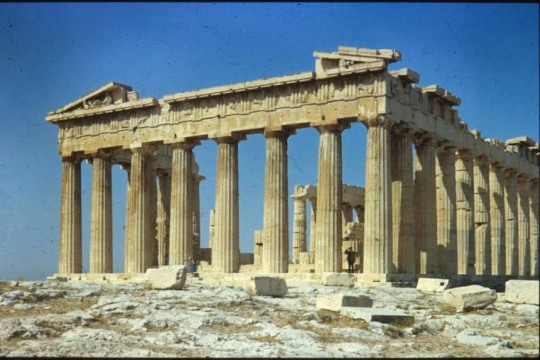
What Happened to the Parthenon? The Destruction of the Parthenon in 1687
Today the Parthenon in Athens is considered one of the most important and impressive structures of ancient Greece. Originally built in 438 BC, the structure served a number of roles. During classical ages it was a temple dedicated to the goddess Athena. When Christianity became the dominant religion in the Roman Empire it transformed into a Christian church. When the Ottoman Empire conquered the Byzantine Empire in the 15th century, it was again transformed into an Islamic mosque. Today, however, the Parthenon is a ruin of marble columns, a shell of its former glory. This was not caused by weather or the fact that the structure is thousands of years old. Often, buildings and monuments are looted, it's stones pilfered by stone masons in order to construct other buildings. Such is the case with the Egyptian pyramids, Hadrian's wall, the Roman Colosseum, and countless other sites. However, with the Parthenon this was also not the case, at least not for the bulk of it's destruction. Throughout most of its history the Parthenon was a well respected, well maintained, and a heavily used building. So what happened to the Parthenon?
In 1687 the Ottoman Empire was at war with the Republic of Venice. On September 21st, 1687 an army of 10,000 Venetian soldiers under the command of Francesco Morisini landed on the outskirts of Athens with the intent of capturing the city as well as the rest of Greece. The Venetians laid siege to the city and began a six day bombardment with mortars and siege cannon. In their haste to defend the city the Ottoman Turks fortified the Acropolis and turned the Parthenon into a gunpowder magazine, a storage place for gunpowder, cannonballs, small arms shot, and other munitions. Later during the siege a captured Turkish deserter revealed to Morisini the location of the Ottoman powder magazine. Morisini ordered the Parthenon targeted by his cannon and the gunpowder magazine was ignited by a mortar shell. The resulting explosion blew off the roof, caused the structure's internal walls to crumble, destroyed 3/5ths of the structures sculptures, and destroyed several columns, mostly on the south side where the shell entered the building. The resulting blast also killed 300 Turkish soldiers.
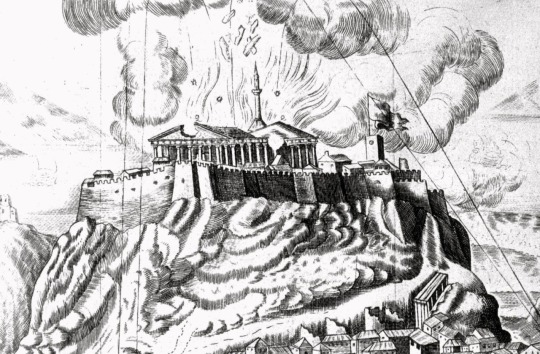
With the Turks supply of gunpowder destroyed the Venetians easily conquered the city. Then the looting began, with Morisini and his troops removing ancient treasures and statuary as prizes of war. Many statues were accidentally smashed during removal, the rest were shipped off to collections in Italy, where they eventually were scattered all over Europe. After the devastating explosion of the Parthenon, centuries of secondary destruction occurred, mostly in the form of looting, which finally did begin to occur now that the building had been badly damaged and left abandoned. Stone masons carted off wagon loads of marble for use in other building projects and structures. In 1801 the British ambassador to the Ottoman Empire, Thomas Bruce, 7th Earl of Elgin, became fascinated with the Parthenon, studying its architecture closely and documenting it's magnificence. He then proceeded to loot the Parthenon of its remaining statuary, especially the statues that make up the front facade of the building. 17 statues, 15 panels, and a large 247 foot long frieze were removed and shipped to Britain, where they were sold to the British Museum.
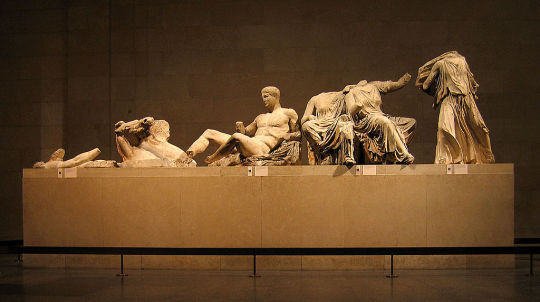

Today the statuary, known as the Elgin Marbles, are a source of contention between the United Kingdom and Greece, as the Greeks want them back. The remains of the Parthenon are still under threat, especially from the slow destruction of acid rain erosion. In 1975 the Greek government began the project to preserve and restore the Parthenon, with slow painstaking work occurring over the decades.
736 notes
·
View notes
Text

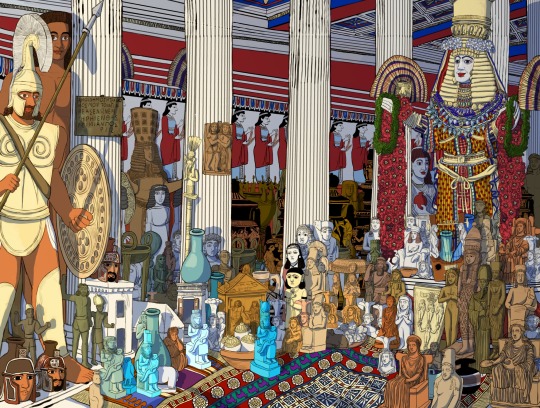


Within the Heraion of Samos 👑 🦚 🪷
One of the oldest temples dedicated to the goddess of marriage and the queen of Mount Olympus, Hera (with the first one built somewhere within 800 BCE upon an early pre-existing late Myceanean altar/ worship site, and the later 2nd bigger one were built somewhere between 700-600 BCE.); since according to the local tradition, the goddess was born under a chaste tree on the island near the river banks of Imbrassos; which the holy sanctuary would later be built upon. Coupled with a few facts that Hera was one of the earliest goddesses being worshipped and has temples dedicated to by the Greeks, even before Zeus; and her equally impressive religious sanctuary site in Argos which was mentioned in Homer’s Illiad. (Where the Greeks viewed her as a multifunctional goddesses-not only the Panhellenic wife of Zeus and 'queen' of the gods, protectress of childbirth, growing up, and marriage; but also a patron of the wellbeing of the family, in relation with the family and the state, too.)
The Ionian architectural style of the second temple reconstruction, designed by Rhoikos and Theodoros of Samos-along with the xoanon icon of veiled Hera that was depicted in the later Roman coins-have been speculated to be the influence of various later Ionic temples within coastal towns of Asia Minor that were built during Hellenistic times. (Such as the temple of Apollo in Didyma and the famed temple of Artemis of Ephesus in Turkey-one of the Seven Wonders of the Ancient World.)
From all of the archeological essays that I read about the architectural traces/remnants, the statues, and the votive offerings that were excavated within the temple area, it seemed that the goddess do enjoy a large influx of pilgrims and visitors, too- as there cultural syncretism between the Greeks and Greek Cypriots, Phoenicians, Babylonians, Assyrians, Urartians, and Egyptians. Despite the Heraion were later destroyed by an earthquake/or toppled by weak foundations in the muddy marshy ground in 550 BCE and the worship activity almost completely ceased within the sanctuary during classical times, as Samos were under the rules of Athens; interest in Hera began again in Hellenistic-Roman times as numerous smaller temples were erected around the area. Unfortunately, the third temple reconstruction by Polykrates was never finished and was later used as a quarry and a Christian church in Byzantine times.
#ancient greek#greek mythology#archeological sites#ares#queen hera#hebe#little hebe and her sister eileithyia#eilethyia#iris#juno#mars#juventas#historical reconstruction
206 notes
·
View notes
Text
Gaza, that ancient city on the eastern shores of the Mediterranean, has come to be the political and moral compass of the entire world. Despite the pervasive destruction, Gaza stands not as a place in need of lessons. Instead, it is itself the poignant lesson of our modern age – a litmus test for humanity. As the death toll continues to rise, it becomes increasingly challenging to conceive of a violence more profound than that inflicted by machine guns and aerial bombardment. However, Israeli colonial violence – both in Gaza and Palestine more broadly – has historically manifested at various scales. It extends from the confines of a bedroom to encompass a neighbourhood, a whole city, and stretches to the scale of a regional geography.
Understanding the destruction of Gaza calls for a dual perspective. It requires zooming in on the intimate scales of violence while also being aware of these broader manifestations. At the core of Israeli colonialism in Palestine is the logic of partition, a paradigm fundamentally at odds with the land, its people and its history. Gaza has long been a nexus of interconnected worlds: for millennia, it served as a vital crossroads, connecting Palestine to Egypt and bridging the continents of Asia and Africa. The roads from Gaza to Bir al‑Sabe’, Jaffa and Jerusalem have witnessed the passage of visitors, merchants and pilgrims from diverse corners of the world. The city’s social, cultural and economic prosperity has been woven into its geographical openness, a defining feature in Palestine’s long history. Any thought about Gaza and Palestine’s future is bound to reckon with this history.
The enduring imprints of Gaza’s geographical openness are discernible in both its social and built fabrics. This ancient city has witnessed the rule of various empires and civilisations, including the Egyptian Pharaohs, Greeks, Romans, Byzantines and successive Islamic dynasties – each contributing to the rich tapestry of the city. Gaza is home to historic treasures such as the Anthedon Harbour, the port that linked the city to the Mediterranean world in the Roman era; the Great Omari Mosque, one of the most significant mosques in Palestine; and the Church of Saint Porphyrius, believed to be the third oldest church in the world.
These historic landmarks, among residential buildings, universities, museums and cultural institutions, have not escaped the intentional targeting and destruction inflicted by Israel. In essence, these sites embody all that Gaza stands for and Zionism doesn’t – geographical openness and historical continuity. In historical terms, the 75 years of Zionist domination in Palestine represent an anomaly, as Gaza and other cities have perennially thrived on cultural diversity and interconnection.
38 notes
·
View notes
Note
Help me choose: Meteora/Metsovo/Ioannina or Mycenae/Nafplio/Epidavros? Thank you!
Those are seriously good options! I believe you would love either destination, so I will just give you what each place is ideal for.
Meteora - Metsovo - Ioannina
This is an itinerary that is ideal for nature lovers and people who love urban and provincial areas with strong traditional character in gorgeous natural settings.
Pros:
Meteora is hands down the best natural wonder of Greece.
It is also one of the two most important destinations for Christian Orthodox and post-Byzantine heritage monuments.
Metsovo is a town built in a high altitude, surrounded by beautiful mountains.
It has a strong traditional mountain Vlach Greek character and great cuisine.
Ioannina is the 6th largest city in Greece. It is vibrant, it is a university city, however it retains its own traditional character.
Ioannina is a lake city (which also features a must-visit inhabited lake island) built close to a lot of natural beauty and is the starting point for a lot of nature-oriented destinations, including two national woodland parks.
Ioannina is very significant for Ottoman Greek and Modern Greek history and has a lot of museums and cultural places to visit. Metsovo does too.
Ideal for a lush green spring or a cool summer.
Cons:
No access to the sea.
Farther from Athens than the other itinerary plan.
Probability of adverse weather if visited in cold months.
Tip: For Ancient Greek culture buffs, the archaeological site of Dodona is about 22km from Ioannina.

Mycenae - Nafplio - Epidaurus
This itinerary is ideal for history buffs of all kinds.
Pros:
Mycenae is the best destination for the Mycenaean civilization.
Epidaurus has the best preserved ancient Greek theatre in Modern Greek territory and is in general one of the best destinations regarding Classical Greece. The theatre is functioning. (If you go at the right time during summer, you can watch a theatrical play there as well.)
Nafplio is the first capital of the Modern Greek state, it is coastal and has many points of interest regarding Modern Greek history.
Nafplio is also a good place to explore Venetian / Latin presence in Greece in the late Byzantine and post-Byzantine era.
Nafplio is much smaller than Ioannina but it is one of the prettiest cities in Greece. Both these cities are beautiful though.
Driving distances here are smaller as all destinations are in the same one administrative region (Argolis) and they are closer to Athens.
It might not have the wow factor of the other itinerary nature-wise, but that doesn't mean it does not have beautiful natural surroundings, and coastal ones too.
Ideal for early spring and a mild winter.
Cons:
If history and museum visiting get old for you after a point, the other itinerary might be better.
Pretty hot in summer months.
Touristy.
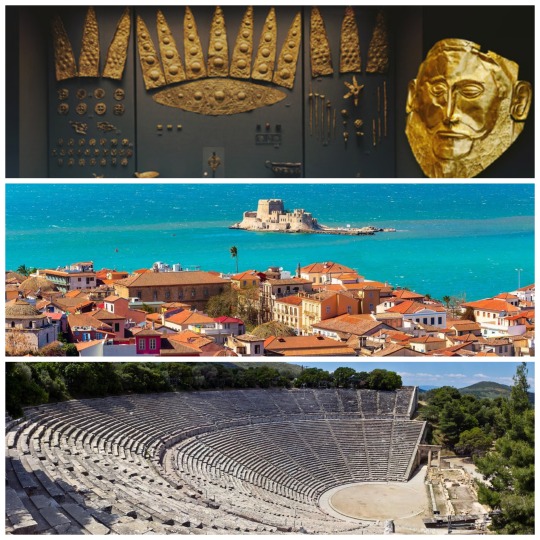
#greece#europe#travel#travel guide#tourist guide#metsovo#ioannina#meteora#epidaurus#nafplion#mycenae#trikala#epirus#thessaly#argolis#argolida#peloponnese#peloponnisos#mainland#greek culture#anon#ask
29 notes
·
View notes
Text
Coptic Women's Headpieces: padded headbands and Palmyran strips
Neither of these have much (...in the first case, any) information out there to make their own post about, but they're both interesting.

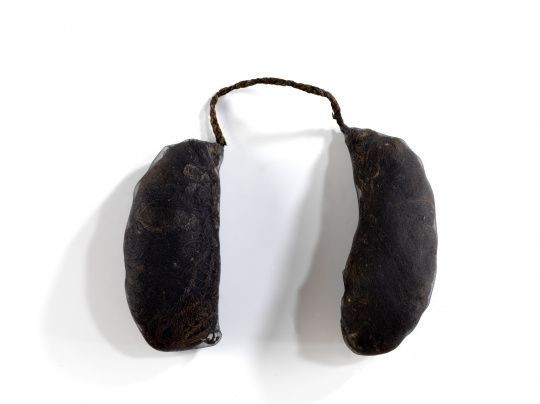
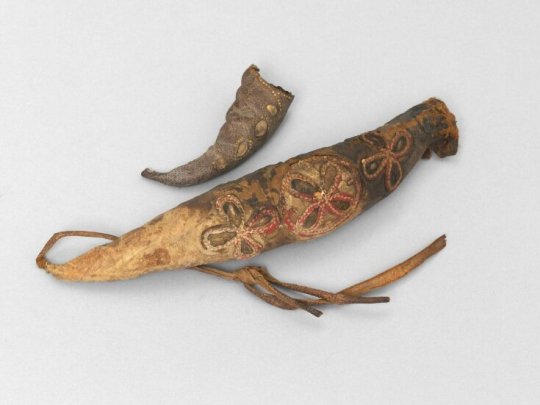

The first are these padded headpieces. In the past I'd only seen the one made of leather with flowers on it in the V&A, which notes its possible usage. However it was only until recently when I began poking around on the French internet when I found more, and better yet, an undeniable depiction of a woman wearing the headpiece. Before this I'd seen some depictions that may be the headpiece being worn, but usually seem much flatter than these were made to be or like they're a more standard gold diadem.
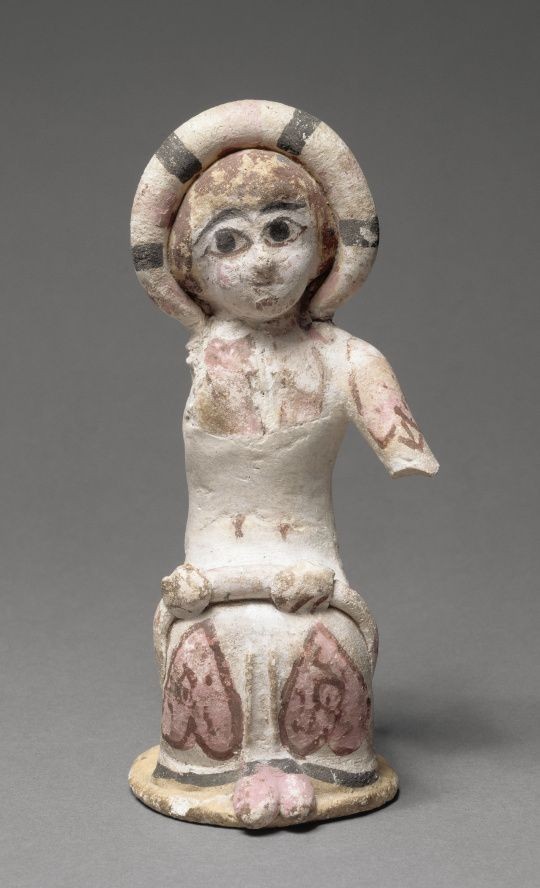
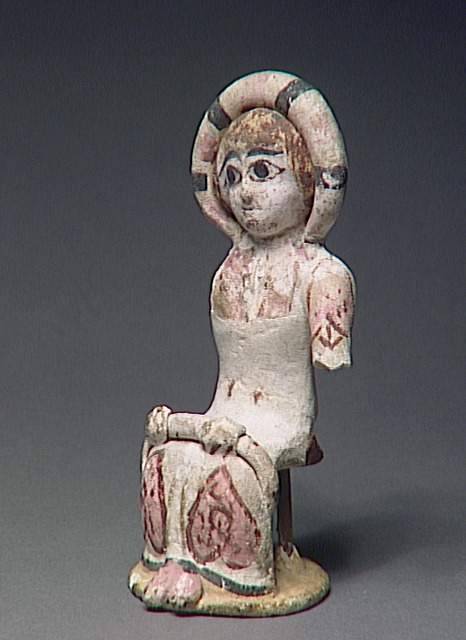
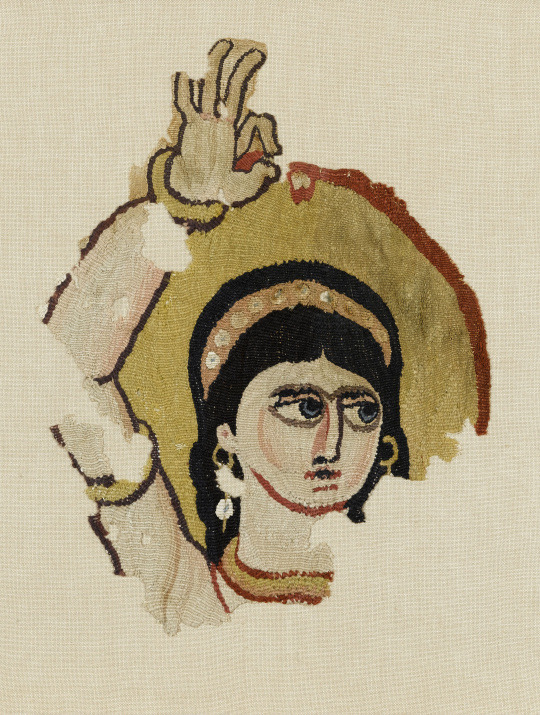
In addition to this, there are a few depictions of Coptic figures wearing these flower bud/petal crowns (more popular in the earlier part of Roman Egyptian art history), which makes me wonder if these were ever used as a base for those.


It's also possible this was out under the turbans worn by women in Coptic art. An example of a bust from Byzantine exists of a woman wearing a turban from Constantinople, and when viewed from the side it can be seen that the volume at the front of her headdress terminates in points near the nape of her neck/her ears. However, this bust also lacks the volume one would expect from the examples if a roll like the extant examples was used.
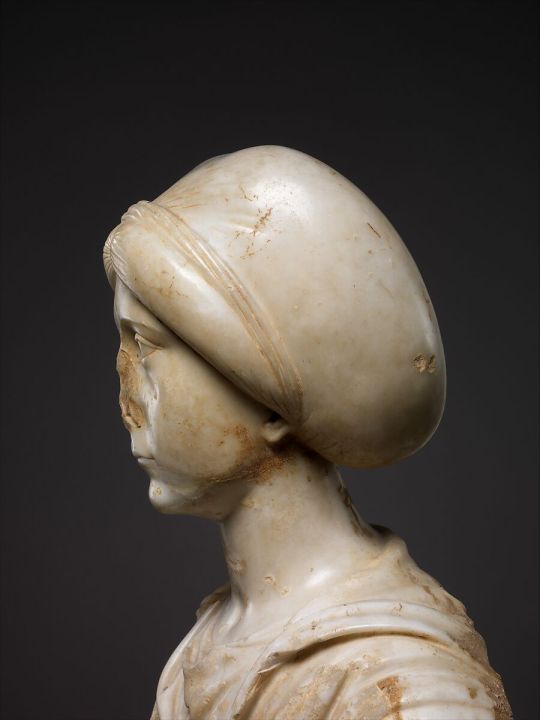
The other piece is one I noticed before, and isn't specific to Egypt, or originated from there. It seems to have come from Palmyra, and is fairly common in the funeral busts we have from there.

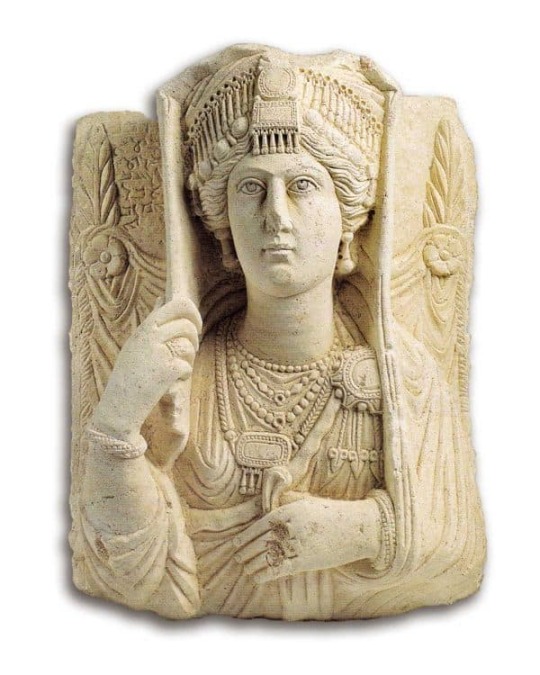
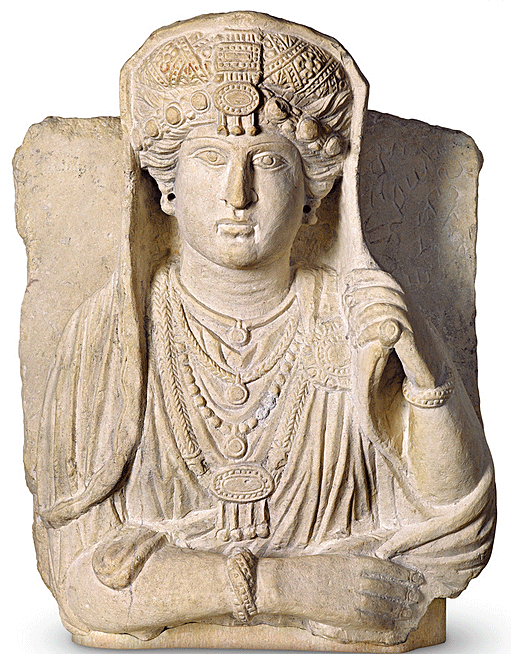
These are small plaques of metal and gems, typically with a few small beads dangling over the forehead. Currently it's supposed that they were attached to a woman's bun in some way.

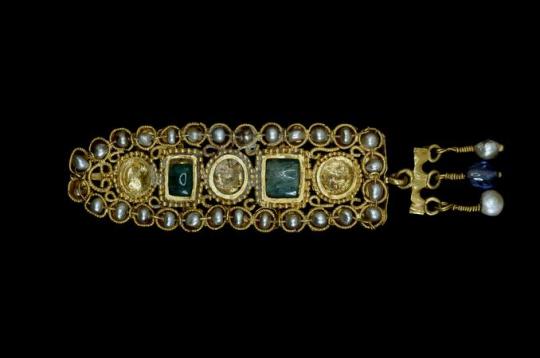
Here's a Roman-era Greek bust and a Roman- era Tunisian example.
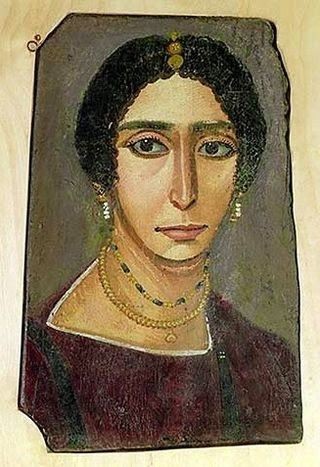
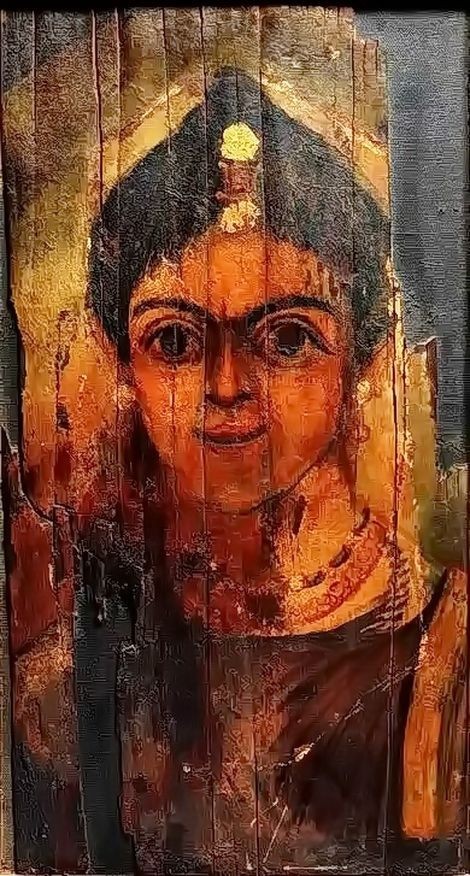



Heres some Roman-Egyptian portraits with similar head jewelry. So far, I haven't found a definitive later Coptic depiction of one being worn, but I don't think that means they stopped being worn before Christianization. It's possibly just a matter of what art has survived and what I've personally seen. Generally, Coptic jewelry is similar to the jewelry from earlier Roman-Egyptian examples, with some more unique examples and examples that were inspired by later trends in the Byzantine Empire.

One of the possible Coptic examples is from the tomb of Theodosea (full disclosure: Theodosea herself was Greek Christian living Egypt, not a Copt in the sense we mean it now, but she's dressed in a way generally common in Egypt at the time. I use "possible Coptic example" here to indicate the contemporary cultural majority of Egypt, which is distinct from the pre-Christian cultural identity of native Egyptians). Theodosea here is identified by Engy Hanna as wearing some type of golden hairnet, with a green pendant with 3 hanging pearls and two strings of hanging beads attached. Because of her palla, it's impossible to tell if she has only one medallion attached to her hairnet or if this is a strip. The overall composition of elements (a cover over the hair, the two strands, center ornament, and a shawl over top the head) are very similar to Palmyran headdresses, though she doesn't wear a turban or the patterned fillet they do.


Recently, I found a bust on an auction site labeled "Roman, probably made in Egypt" from the 1st century, with this ornament but made of a more pliable material- probably fabric. And another on the same site, maybe Egyptian (the information mentions both the terms Gandhara and Greco-Egyptian), with the more typical jeweled look, 2nd-3rd century (which is more into the swing of Christianization in Egypt).



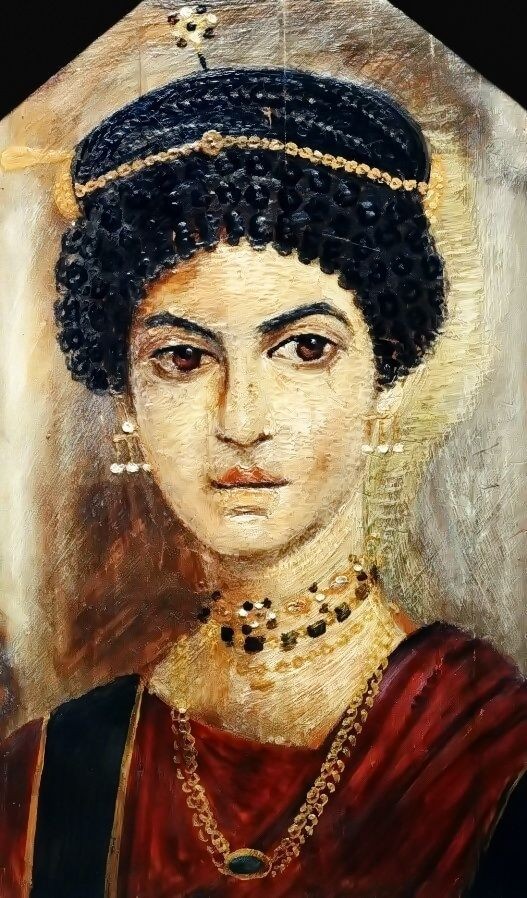

The last aside is another jewelry piece resembling that of Palmyra, though less so: a kind of circlet that appears to be made of chain with a center pendant. The star pendant worn by the second woman also notably resembles the pin holding the strip to the Greek girl's updo. The hanging strands of Theodosea are more blatant, but it's possible these were elaboration on the fashion. This style of jeweled forehead circlet, unlike the headband and strip (I have seen art of Syrian and Egyptian women with a strip, as well as Nubian art of women with a fillet/circlet and a center strip. The latter seems to be a more widely used item than the former two, which I have only seen one depiction each of so far), has remained consistently popular in West Asia and North Africa. Additionally the padded band worn by one of the Palmyran women featured here could be a related item to the padded headband; to know one would have to see the back of her head or find an artifact connecting the two. Even if a relationship can be proven between the Byzantine, Palmyran, and Coptic padded fillets, there is no clear indication of where it originated.
*I am a Copt, and if you are not, do not tag this post talking about "recreations". I find that offensive given the actions taken by Albert Gayet in regard to the clothes he took from graves. It is a simple boundary and you will not "enlighten" me to see how it's fine.*
Sources/Further reading:
https://art.rmngp.fr/fr/library/artworks/femme-assise_terre-cuite_polychromie-technique
https://art.rmngp.fr/fr/library/artworks/bourrelet-de-coiffure-postiches_laine-textile
https://art.rmngp.fr/fr/library/artworks/bourrelet-de-manteau_laine-textile
https://art.rmngp.fr/fr/library/artworks/bourrelet-de-mantelet_laine-textile_textile-matiere_lin-fibre | sources for 3 of the padded fillets and the figurine
https://collections.vam.ac.uk/item/O353014/pair-of-fillets-unknown/
https://www.metmuseum.org/art/collection/search/468716 | the marble bust
https://www.persee.fr/doc/bch_0007-4217_1969_num_93_2_4903 | in German, has photos of carvings with the hair ornament
https://www.sothebys.com/en/auctions/ecatalogue/2016/ancient-marbles-classical-sculpture-art-l16260/lot.59.html | carving of the short haired child
https://www.sothebys.com/en/buy/auction/2022/ancient-sculpture-and-works-of-art/a-roman-marble-portrait-head-of-a-girl-circa-2nd | carving of a girl with a jeweled strip, may be Egypt as the notes say an image of it was published in a work on Greco-Egyptian art and the girl has an "Isis lock" hairstyle
https://www.jstor.org/stable/4241695 | overview of Palmyran jewelry
https://www.britishmuseum.org/collection/object/G_1903-0717-3 | Tunisian example of strip
https://www.livius.org/pictures/greece/thessaloniki/thessaloniki-museum-pieces/thessaloniki-portrait-of-a-girl/
https://womenofegyptmag.com/2020/02/11/what-coptic-artefacts-tell-us-about-women-in-ancient-egypt-part-one/
#Coptic art#Coptic culture#Late Antiquity#Late Antique Egypt#Masr#Copt#Actually Egyptian tag#Cipher talk
90 notes
·
View notes
Text

Where is Calabria?
Calabria is the southernmost region of the Italian peninsula, between the blue Ionian and Tyrrhenian Seas and separated from the island of Sicily by the Strait of Messina.
Calabria only shares a border with Basilicata to the north, but Sicily lies a short two miles off Calabria's tip.
One of the least explored and at the same time one of the most rewarding regions of Italy, Calabria is a region of often spectacular scenery and unspoilt landscapes justifiably renowned for its fine food and rich culinary traditions.

There are also fine towns such as beautiful seaside Tropea, while the lungomare of the bigger city of the region, Reggio Calabria, has been called the most beautiful in Italy.

Calabria has the wildest mountain ranges on the Italian peninsula – indeed some of the wildest and most remote in Europe. Byzantine monks escaping persecution flocked to the mountains of Calabria throughout the medieval period, founding remote hermitages and monasteries such as the dramatically sited Cattolica di Stilo along with several hidden gems in the river valleys of the Pollino National Park.
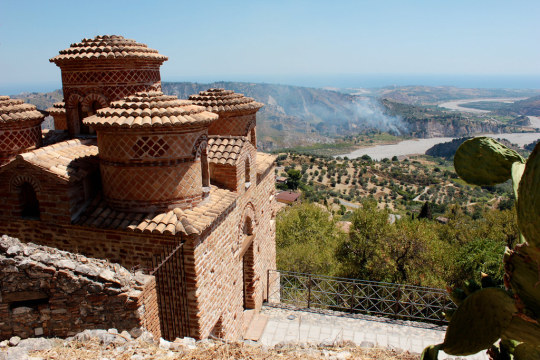
The Greek temples and theatres of Sicily may be better known, but it is in Calabria that the influence of Greece on Italy really becomes tangible. Where else in Italy are there villages where Greek is still spoken, and where goat and lamb are roasted in a pit – a practice that would have been familiar to the ancient Greeks? Pythagorus lived here, and the sea monster Scylla – who ate most of Odysseus’ crew — had her cave here.

The Riace Bronzes are arguably two of the finest Greek bronze statues to survive anywhere, while the ancient Greek settlement of Locri was founded when the Locrians were banished from Greece ‘because of the scandal caused by their noblewomen’s indiscriminate love affairs with slaves’. Locrians insisted on strictly matrilinear succession – and was one of the only known matriarchies in ancient Greece.

Follow us on Instagram, @calabria_mediterranea
#calabria#italy#italia#southern italy#south italy#mediterranean#mediterranean sea#sea#mountains#mountainscape#seaside#seashore#seascape#beach#beaches#history#magna graecia#ancient#ancient greece#locri#tropea#reggio calabria#bronzi di riace#stilo
28 notes
·
View notes
Text
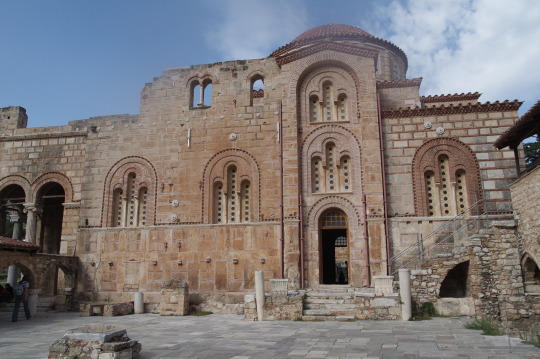
I also went to Moni Dafniou, an 11th century restored monastery that was built in part with remnants of ancient sites from the surrounding area. The church was built along Nea Moni and Osios Loukas, two churches belonging to monasteries of the 11th century, one in Chios and the other in Boeotia that have been also restored.
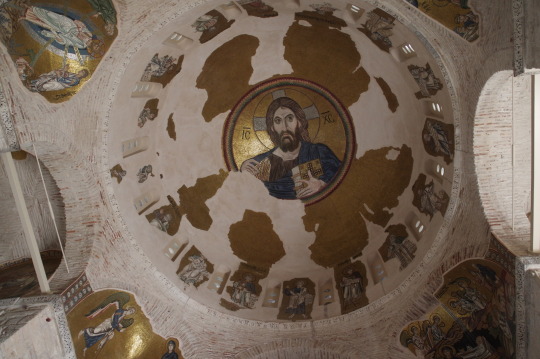
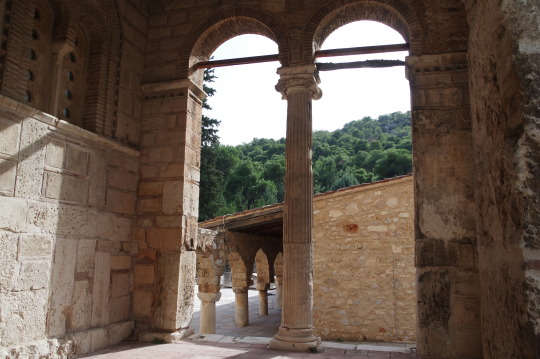
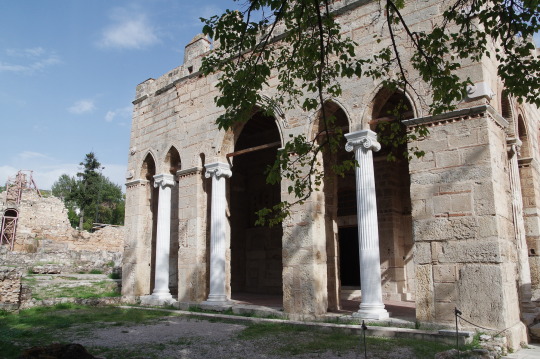
The scenes from the mosaics are from the life of Christ.

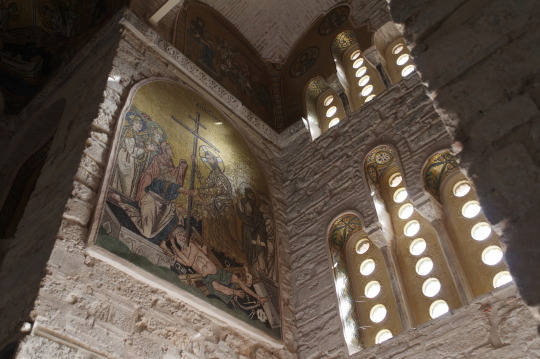
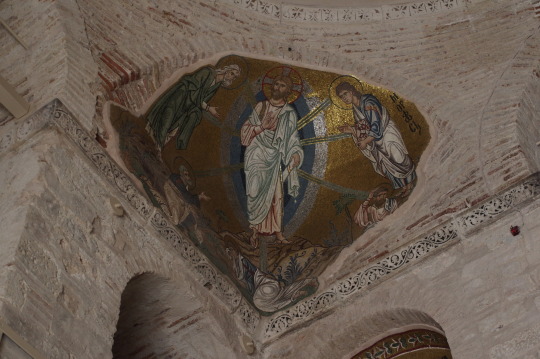
#greece#dafni#moni dafniou#byzantine churches#byzantine mosaics#mosaics#11th century#byzantine sites#Byzantine Greece#βυζαντινές εκκλησίες#εκκλησίες#μοναστήρια#βυζαντινά μοναστήρια#αρχαιολογικοί χώροι#archaeological sites#ελλάδα#δαφνί#Attica#greek archaeological sites
231 notes
·
View notes
Text
Figurine from Georgia (South Caucasus), c.300-200 BCE: this figurine was found buried in a pit beneath the ruins of an ancient temple; it was decorated with gold jewelry, wrapped in a burial shroud, and then placed in its own special "grave"
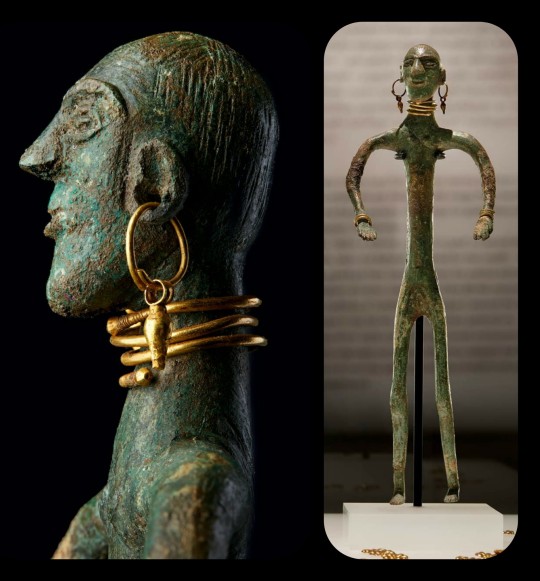
This is one of seven figurines that have been unearthed from similar burial pits throughout the city of Vani, which once served as the cultural, religious, and administrative center for the Kingdom of Colchis. Each figurine was crafted from bronze or iron, decorated with pieces of gold jewelry, wrapped in a special shroud, and then buried in a small "grave" that had been dug beneath (or near) one of the many temples that once stood throughout the city.
From The Golden Graves of Ancient Vani:
... other discoveries at Vani have shed light on Colchian culture. Most compelling are seven metal figurines, dating to 300–200 B.C., that have been discovered both in and near sacred structures at Vani. Adorned with gold jewelry and apparently wrapped in decorated garments, the figures were carefully buried in a way that seems to mimic the human burials at the site. Their precise function remains unclear, but they probably related to local religious and funerary customs.
And the Fitzwilliam Museum (which exhibited some of the artifacts from Vani back in 2008) adds:
Distinct local ritual practices are suggested during [the 3rd century BCE] as can bee seen from the four bronze and iron figurines displayed in the exhibition. These were discovered on the city’s upper terrace and were all buried in or near a sanctuary; this placement may well indicate a religious or funerary function for the figurines. The example illustrated here was placed between two terracotta tiles that were buried in a pit cut into the bedrock, thus mimicking contemporary human burials.
The figurine has a head with disproportionately large features, a low sloping brow, and an elongated torso with bowed arms and stiffly rendered legs. Most striking is its lavish gold jewellery, some of which reflects types worn by those buried at Vani. In addition to gold earrings, a torque (neck ring), and bracelets, five gold rosettes appear to have been strung around the figurine’s head and several pendants were found in its chest area.
The form and detail of their jewellery date the four figurines to the 3rd century BC. Their precise function, surely of local religious nature, still remains a subject of discussion. However, it is worth noting that the intriguing practice of burying such figurines in a ritualistic manner appears to be specific to Vani during its phase as a sanctuary city.
During antiquity, the Kingdom of Colchis covered the Western half of what is now the nation of Georgia, located in the South Caucasus. Colchis was famous for its talented goldsmiths, and it ultimately came to be known as the homeland of the fabled Golden Fleece -- the destination of Jason and the Argonauts, according to the Greek Argonautica.
Sources & More Info:
J. Paul Getty Museum: The Golden Graves of Ancient Vani
Fitzwilliam Museum: Ritual
Fitzwilliam Museum: From the Land of the Golden Fleece
Institute for the Study of the Ancient World: Wine, Worship, and Sacrifice
Journal of Greek, Roman, and Byzantine Studies: Vani: An Ancient City of Colchis (PDF download)
#archaeology#history#artifact#ancient history#art#vani#colchis#kolkheti#sakartvelo#georgia#caucasus#ritual artifact#religion#mythology#anthropology#ancient greece#crafting#sculpture#paganism#ancient ruins#ancient temple
43 notes
·
View notes
Text
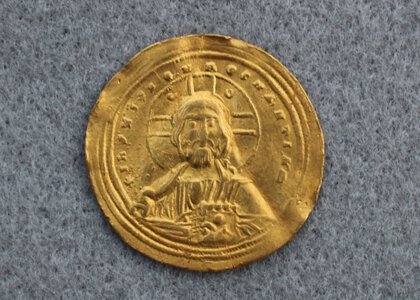
A Very Rare 1,000-Year-Old Byzantine Gold Coin Found in Norway
Approximately 1,000 years ago in Constantinople — the bustling capital of the Byzantine Empire — a small gold coin was minted.
Now, about a millennia later, the tiny treasure has been unearthed more than 1,600 miles away from its origin, according to a Nov. 30 news release from the Inlandet County Municipality.
Officials said a metal detectorist stumbled upon the artifact among the mountains in Vestre Slidre, Norway. It’s a rare discovery for Norway, and the seemingly out-of-place artifact appears to be in great condition, especially given its age.
Photos of the coin show each side’s intricate carvings. One side depicts Jesus Christ holding a Bible, while the other shows Byzantine emperors Basil II and Constantine VII, brothers who ruled together, officials said.
Each side also has an inscription. The side showing Jesus has a Latin inscription, which translates to “Jesus Christ, King of those who reign,” according to experts. The side depicting the emperors has a Greek inscription, which translates to “Basil and Constantine, emperors of the Romans.”

Experts said the coin was minted during Basil and Constantine’s reign, likely sometime between 977 and 1025. The dotted circles bordering the coin indicate its age.
HOW DID THE COIN MAKE IT FROM CONSTANTINOPLE TO NORWAY?
Experts have tried to determine how the coin ended up in Norway.
One hypothesis is that the artifact belonged to Harald the Ruthless — the king of Norway from 1045 until 1066, according to Britannica.
Before he was king, Harald the Ruthless, also known as Harald Hardråde, served as part of the Byzantine emperor’s guard, experts said. It was customary for guards to loot the palace after an emperor’s death, and three emperors died during Hardråde’s time as a guard.
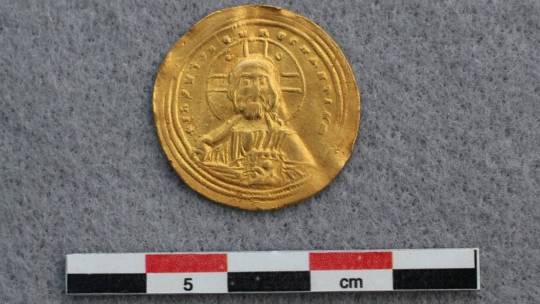
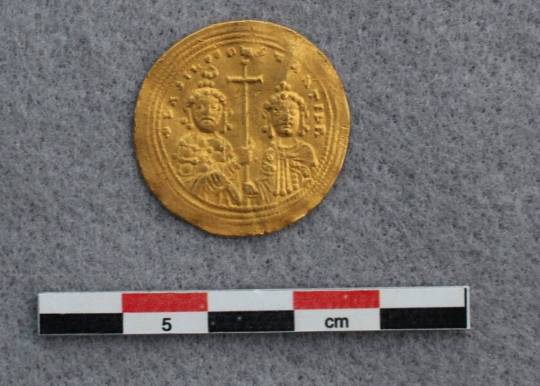
Once the coin made it back to Norway, it could have been lost along a trade or transportation route, according to experts.
Archaeologists have not had a chance to fully examine the site where the coin was found, but they are planning a broader excavation in 2024, officials said.
By Moira Ritter.
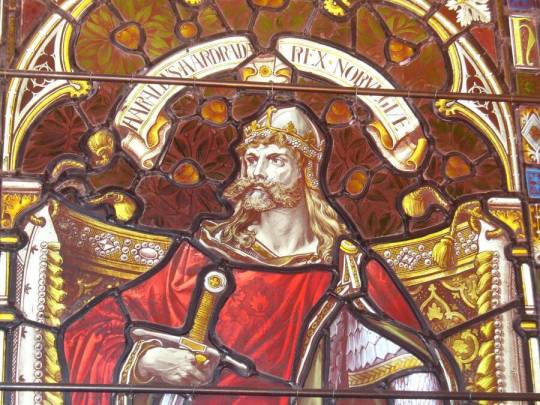
#A Very Rare 1000-Year-Old Byzantine Gold Coin Found in Norway#Constantinople#Vestre Slidre Norway#Basil II#Constantine VII#Harald the Ruthless#Harald Hardråde#Jesus#metal detecting#gold#gold coin#collectable coins#ancient artifacts#archeology#archeolgst#history#history news#ancient history#ancient culture#Byzantine Empire
73 notes
·
View notes
Text
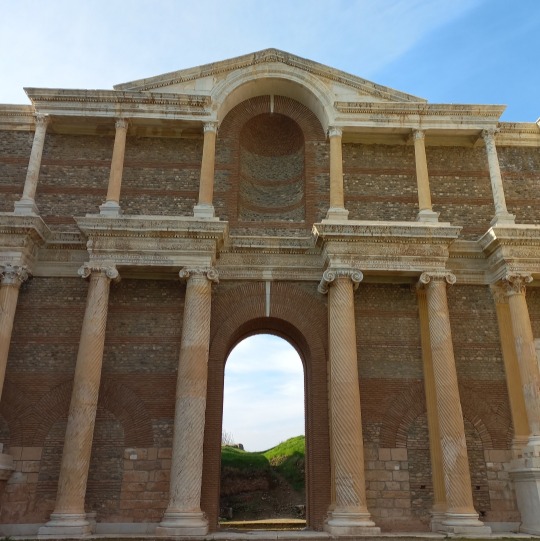


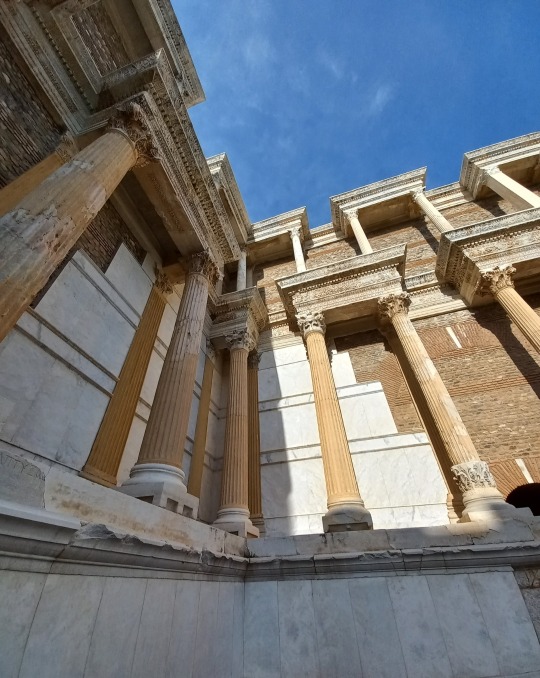

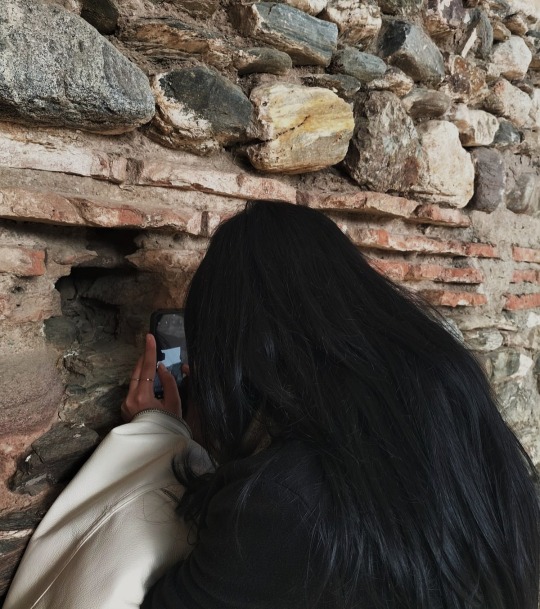


Sat, Jan 12 - I visited the ancient Roman city of Sardes today for the first time. (Information about the city is under this post.) It consisted of the Gymnasium with the remains of many Byzantine shops including restaurants and painting shops, a public pool, tombs, and a Synagogue. It was truly refreshing to see the place overall, but what I adored about the visit was the fact that you could imagine and experience the feeling of what it was like to be living in an ancient city, as it was empty because of the weather conditions. No voices, no noise, no motion, just the smell and the air of this ancient place. (I bet Henry Winter would die for it.) The Temple of Artemis was also close and I went there as well. I'll publish the pictures from the Synagogue and the Temple next if you want to check them out.
Sardis (/ˈsɑːrdɪs/ SAR-diss) or Sardes (/ˈsɑːrdiːs/SAR-de ess; Lydian: 𐤳𐤱𐤠𐤭𐤣, romanized: Sfard; Ancient Greek: Σάρδεις, romanized: Sárdeis; Old Persian: Sparda) was an ancient city best known as the capital of the Lydian Empire. After the fall of the Lydian Empire, it became the capital of the Persian satrapy of Lydia and later a major center of Hellenistic and Byzantine culture. It is now an active archaeological site in modern-day Turkey, in Manisa Province near Sart.
In 334 BC, Sardis was conquered by Alexander the Great. The city was surrendered without a fight, the local satrap having been killed during the Persian defeat at Granikos. After taking power, Alexander restored earlier Lydian customs and laws. For the next two centuries, the city passed between Hellenistic rulers including Antigonus Monophthalmos, Lysimachus, the Seleucids, and the Attalids. It was besieged by Seleucus I in 281 BC and by Antiochus III in 215-213 BC, but neither succeeded at breaching the acropolis, regarded as the strongest fortified place in the world. The city sometimes served as a royal residence, but was itself governed by an assembly.
In this era, the city took on a strong Greek character. The Greek language replaced the Lydian language in most inscriptions, and major buildings were constructed in Greek architectural styles to meet the needs of Greek cultural institutions. These new buildings included a prytaneion, gymnasium, theater, hippodrome, and the massive Temple of Artemis still visible to modern visitors. Jews were settled at Sardis by the Hellenistic king Antiochos III, where they built the Sardis Synagogue and formed a community that continued for much of Late Antiquity.
In 129 BC, Sardis passed to the Romans, under whom it continued its prosperity and political importance as part of the province of Asia. The city received three neocorate honors and was granted ten million sesterces as well as a temporary tax exemption to help it recover after a devastating earthquake in 17 AD.
Sardis had an early Christian community and is referred to in the New Testament as one of the seven churches of Asia. In the Book of Revelation, Jesus refers to Sardians as not finishing what they started, being about image rather than substance.
I take the pictures that are on my blog myself. In case you're interested in this post, I also post/reblog content including travel/cultural pictures, books, book recommendations, analysis, quotes, anything related to movies, series, and girl blog entries.
#sardes#ancient rome#ancient greek#gymnasium#ancient history#ancientmonuments#roman architecture#archeology#blog#travel#history#the secret history#henry winter#synagogue#dark academia#aesthetic#light academia#books#girlblogging#hellenistic#reading#if we were villains
35 notes
·
View notes
Text

Old City street with traditional masonry and wooden dwellings
Nesebăr (Nessebur), Bulgaria
Nesebăr is a city on the Black Sea that was founded by the Thracians in the late second millennium BCE. The ancient city was occupied and further developed by the Greeks, Romans, Byzantines, and Ottomans over the centuries. Interspersed among the ancient sites are masonry and wooden dwellings constructed during the 18th through 19th centuries CE. The Ancient City quarter became an UNESCO World Heritage Site in 1983.
(photo 2000)
53 notes
·
View notes
Text
I know you've all been waiting eagerly for it, and here it is: the first Wikipedia poll of the new year! Links and summaries below the cut as always.
On 29 September 1940, a mid-air collision occurred over Brocklesby, New South Wales, Australia. The accident was unusual in that the aircraft involved, two Royal Australian Air Force (RAAF) Avro Ansons of No. 2 Service Flying Training School, remained locked together after colliding, and then landed safely.
On 11 May 1812, at about 5:15 pm, Spencer Perceval, the prime minister of the United Kingdom of Great Britain and Ireland, was shot dead in the lobby of the House of Commons by John Bellingham, a Liverpool merchant with a grievance against the government. Bellingham was detained; four days after the murder, he was tried, convicted and sentenced to death.
The Dorset Ooser (/ˈoʊsər/) is a wooden head that featured in the 19th-century folk culture of Melbury Osmond, a village in the southwestern English county of Dorset. The head was hollow, thus perhaps serving as a mask, and included a humanoid face with horns, a beard, and a hinged jaw which allowed the mouth to open and close.
The Ediacaran (/ˌiːdiˈækərən/; formerly Vendian) biota is a taxonomic period classification that consists of all life forms that were present on Earth during the Ediacaran Period (c. 635–538.8 Mya). These were enigmatic tubular and frond-shaped, mostly sessile, organisms. Trace fossils of these organisms have been found worldwide, and represent the earliest known complex multicellular organisms.
John Rykener, also known as Eleanor, was a 14th-century sex worker arrested in December 1394 for performing a sex act with John Britby, a man who was a former chaplain of the St Margaret Pattens church, in London's Cheapside while wearing female attire. Although historians tentatively link Rykener, who was male, to a prisoner of the same name, the only known facts of the sex worker's life come from an interrogation made by the mayor of London.
Norwich Market (also known as Norwich Provision Market) is an outdoor market consisting of around 200 stalls in central Norwich, England. Founded in the latter part of the 11th century to supply Norman merchants and settlers moving to the area following the Norman conquest of England, it replaced an earlier market a short distance away. It has been in operation on the present site for over 900 years.
Olive Elaine Morris (26 June 1952 – 12 July 1979) was a Jamaican-born British-based community leader and activist in the feminist, black nationalist, and squatters' rights campaigns of the 1970s. At the age of 17, she claimed she was assaulted by Metropolitan Police officers following an incident involving a Nigerian diplomat in Brixton, South London. She joined the British Black Panthers, becoming a Marxist–Leninist communist and a radical feminist.
Paul Palaiologos Tagaris (Greek: Παῦλος Παλαιολόγος Τάγαρις, c. 1320/1340 – after 1394) was a Byzantine Greek monk and impostor. A scion of the Tagaris family, Paul also claimed a somewhat dubious connection with the Palaiologos dynasty that ruled the Byzantine Empire at the time. He fled his marriage as a teenager and became a monk, but soon his fraudulent practices embroiled him in scandal.
The Royal baccarat scandal, also known as the Tranby Croft affair, was a British gambling scandal of the late 19th century involving the Prince of Wales—the future King Edward VII. The scandal started during a house party in September 1890, when Sir William Gordon-Cumming, a lieutenant colonel in the Scots Guards, was accused of cheating at baccarat.
In a protracted conflict during the Spanish colonization of the Americas, Spanish colonisers gradually incorporated the territory that became the modern country of Guatemala into the colonial Viceroyalty of New Spain. Before the conquest, this territory contained a number of competing Mesoamerican kingdoms, the majority of which were Maya.
32 notes
·
View notes